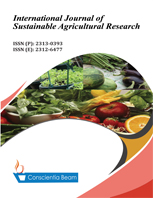Impact of lining of irrigation canals on groundwater recharge: A case study from Punjab province in Indus River basin of Pakistan
DOI:
https://doi.org/10.18488/ijsar.v11i3.3890Abstract
The Canal irrigation network of Pakistan's Indus River Basin (IRB) is one of the world's largest gravity-flow networks, with a significant portion located in Punjab province. The conveyance, delivery, and application of this water to the irrigated crops in the basin result in the loss of more than 50% of its water. This loss of water from the irrigation system is a major source of recharge for the large alluvial aquifer underlying the IRB. Canal lining is carried out as a measure to reduce seepage losses from the conveyance system of irrigation water. On the other hand, canal lining is considered a barrier to aquifer recharge. A study titled “Impact assessment of canal lining in Punjab,” funded by JICA, has been carried out in order to interrogate the comparative performance of lined and unlined canals and their impact on groundwater recharge. We measured seepage losses from 14 selected irrigation-lined canals in Punjab province under actual field conditions using ponding and/or inflow-outflow methods. Results have been compared with pre-lining seepage rates. The results indicate that canal lining has reduced seepage losses by 78%. The heavy pumping in fresh groundwater areas invites saline groundwater from adjacent saline zones. The canal flows at the head have reduced the recharge to groundwater by 9%. Nonetheless, saving from seepage losses by canal lining has increased available water for crops, but it has decreased groundwater recharge.

